
BEHAVIOUR
Scope & Guideline
Fostering Insights in Animal Science and Neuroscience
Introduction
Aims and Scopes
- Animal Communication and Signaling:
The journal frequently publishes studies exploring the mechanisms and functions of communication among various species, examining aspects such as vocalizations, visual displays, and chemical signaling. - Behavioral Ecology and Evolution:
Research on how ecological factors influence behavior and the evolutionary implications of these behaviors is a core focus. This includes studies on mating systems, foraging strategies, and predator-prey interactions. - Social Behavior and Structure:
There is a significant emphasis on the social dynamics within and between species, including cooperation, competition, and social hierarchies, which are critical for understanding group living. - Individual Differences and Personality:
The journal highlights the importance of individual variability in behavior, including personality traits and behavioral syndromes, providing insights into how these factors affect social interactions and survival. - Impact of Environment on Behavior:
Research examining how environmental changes, such as urbanization and climate change, affect behavioral adaptations is increasingly prevalent, showcasing the journal's relevance to contemporary ecological issues. - Comparative Behavioral Studies:
The journal publishes comparative studies across different species, aiding in understanding the evolutionary and ecological contexts of behavior.
Trending and Emerging
- Social Learning and Innovation:
There is an increasing interest in how animals learn from one another and innovate within their environments, highlighting the cognitive aspects of behavior in social species. - Impact of Urbanization on Wildlife Behavior:
Research focusing on how urban environments affect animal behavior has surged, reflecting growing concerns about biodiversity and conservation in increasingly urbanized landscapes. - Behavioral Plasticity and Adaptation:
Studies examining how behaviors adapt to changing environments and the plasticity of these behaviors are trending, particularly in light of climate change and habitat alteration. - Interdisciplinary Approaches to Behavior:
Emerging themes involve interdisciplinary methodologies, integrating insights from psychology, neuroscience, and ecology to deepen the understanding of behavior. - Ethological Perspectives on Welfare and Conservation:
There is a marked increase in research that applies ethological principles to animal welfare and conservation efforts, emphasizing the importance of understanding natural behaviors in these contexts.
Declining or Waning
- Clinical Ethology:
Although there was a surge in publications regarding clinical ethology and animal welfare, the frequency of such studies has decreased, possibly indicating a shift back towards more traditional behavioral studies. - Anthropomorphism in Animal Behavior:
Research that anthropomorphizes animal behavior, often viewed critically in scientific circles, has seen a reduction, as the field moves towards more rigorous, objective analyses of behavior. - Historical and Anecdotal Observations:
The reliance on anecdotal evidence and historical approaches to behavior has waned, with a stronger emphasis now placed on empirical data and experimental methodologies. - Stereotypic and Abnormal Behaviors in Captive Animals:
While still relevant, the focus on stereotypic behaviors in captive settings appears to have lessened, possibly as more attention is directed towards broader behavioral ecology and naturalistic studies.
Similar Journals
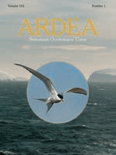
ARDEA
Pioneering research in avian studies and conservation.ARDEA, published by the Nederlandse Ornithologische Unie, is a prominent journal in the fields of Animal Science, Zoology, and Ecology. With its rich history spanning from 1981 to the present, ARDEA serves as a vital platform for researchers and professionals dedicated to avian studies and the ecological sciences. This quarterly journal is recognized in the Q3 category for both Animal Science and Ecology, as per the latest rankings, and maintains an impressive global standing within its subject areas. Although it operates without an open access model, the journal provides significant insights and contributions to the understanding of bird biology, conservation, and evolution. Researchers and students seeking to advance their knowledge in ornithology and related fields will find ARDEA to be an indispensable resource, promoting high-quality research and fostering academic collaboration.

JOURNAL OF COMPARATIVE PSYCHOLOGY
Championing Rigorous Research in Behavioral ScienceJOURNAL OF COMPARATIVE PSYCHOLOGY is a prestigious academic journal published by the American Psychological Association, dedicated to advancing the understanding of behavioral processes across diverse species. With its ISSN 0735-7036 and E-ISSN 1939-2087, the journal has been a cornerstone of comparative psychology research since its inception in 1983. It primarily caters to the fields of ecology, evolution, and behavior, ranking impressively in the Q2 quartile in the category of Ecology, Evolution, Behavior and Systematics, and Q3 in the miscellaneous Psychology category as of 2023. This journal serves as a vital platform for disseminating high-quality research, addressing both fundamental questions and applied issues in systematic studies of behavior across species. Although not open access, its rich repository of research articles, meta-analyses, and reviews makes it an indispensable resource for researchers, practitioners, and students striving to deepen their knowledge and foster innovation in comparative psychological studies. With a commitment to rigorous peer review and scholarly excellence, the JOURNAL OF COMPARATIVE PSYCHOLOGY is a key player in shaping the discourse within its field and driving future research.
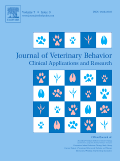
Journal of Veterinary Behavior-Clinical Applications and Research
Bridging the gap between research and clinical application.The Journal of Veterinary Behavior-Clinical Applications and Research, published by Elsevier Science Inc, is a premier outlet for original research and clinical studies in the field of veterinary behavior. With an ISSN of 1558-7878 and an E-ISSN of 1878-7517, this journal serves as an essential resource for veterinarians, animal behaviorists, and researchers dedicated to understanding and improving animal welfare through behavioral science. The journal holds a respectable Q2 ranking in the Veterinary (miscellaneous) category as of 2023, attesting to its significant impact in the field. Although it does not offer open access options, it fosters a community of professionals who are passionate about advancing the application of behavioral research in clinical settings. With coverage extending from 2006 to 2024, the journal aims to disseminate valuable insights that contribute to effective behavior management and intervention strategies, ultimately enhancing the relationship between animals and their caregivers.

LEARNING & BEHAVIOR
Discovering New Dimensions of Learning and BehaviorLEARNING & BEHAVIOR is a distinguished academic journal published by SPRINGER that serves as a critical platform for the dissemination of research in the fields of behavioral neuroscience and cognitive psychology. With an ISSN of 1543-4494 and an E-ISSN of 1543-4508, this journal publishes high-quality, peer-reviewed articles that explore the complexities of learning processes and their behavioral implications. Despite its current Q4 status in Behavioral Neuroscience and Q3 in both Cognitive Neuroscience and Experimental and Cognitive Psychology, LEARNING & BEHAVIOR remains a valuable resource for researchers seeking to enhance their understanding of these dynamic fields. The journal has a converged publication timeline from 2003 to 2024, ensuring that it captures emerging trends and innovative methodologies. With robust accessibility options for a diverse readership, the journal fosters a comprehensive academic environment, inviting submissions that contribute to theoretical advancements and practical applications in understanding behavior. Authors and readers are encouraged to leverage this journal to engage with cutting-edge research that drives the behavioral sciences forward.
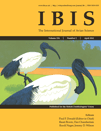
IBIS
Shaping the future of zoological research.IBIS, published by WILEY, stands as a prestigious journal in the field of animal science, zoology, and ecology since its inception in 1859. With a focus on innovative research that informs the scientific community on ecological dynamics, behavioral studies, and conservation strategies, IBIS fills a critical niche for researchers, professionals, and students alike. The journal is recognized for its robust impact factor and commands a Q1 ranking in three key categories as of 2023, demonstrating its influence and reach within the global academic landscape, particularly in Animal Science, Ecology, Evolution, Behavior and Systematics, and Nature and Landscape Conservation. Although not an open-access publication, its rigorous peer-review process ensures high-quality contributions that advance knowledge in these vital areas. Through interdisciplinary collaboration and comprehensive coverage of cutting-edge topics, IBIS remains an essential resource for those striving to understand and protect our natural world.
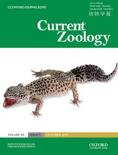
Current Zoology
Elevating Knowledge in the Dynamic Field of ZoologyCurrent Zoology, published by Oxford University Press, is a leading open-access journal dedicated to advancing the field of zoology and animal science since its establishment in 2009. With an impressive Q1 ranking in Animal Science and Zoology as of 2023, the journal maintains a prominent position within the academic community, supported by a ranking of #138 out of 490 in Scopus. Current Zoology serves as a vital platform for researchers, professionals, and students, showcasing high-quality research that spans a broad array of topics within the domain of zoology. This journal is characterized by its rigorous peer-review process, ensuring the dissemination of credible and impactful findings that contribute to the understanding of animal biology and conservation efforts. The open-access model enhances accessibility, allowing a wider audience to engage with the pivotal research being conducted in this dynamic field. Processing all manuscripts in an efficient manner and featuring articles that push the boundaries of current knowledge, Current Zoology is your gateway to explore innovative discoveries and trends in zoology.

Biology Letters
Advancing biological knowledge through concise communication.Biology Letters, published by the esteemed Royal Society, stands at the forefront of research in the field of biological sciences, with a strong emphasis on innovative studies that bridge gaps across disciplines. Since its inception in 2005, the journal has garnered significant recognition, achieving a remarkable Q1 ranking in Agricultural and Biological Sciences (miscellaneous) and a percentile of 88th in the same category, according to Scopus rankings. Released in the United Kingdom, the journal offers a platform for authors to share concise research findings and theoretical perspectives that contribute meaningfully to the advancement of biological inquiry. Although not open access, the journal remains highly regarded in the academic community for its rigorous peer-review process and impactful content, making it an invaluable resource for researchers, professionals, and students dedicated to exploring the complexities of biology. With an ongoing commitment to excellence, Biology Letters continues to shape the future of biological sciences.
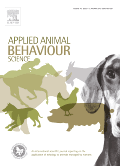
APPLIED ANIMAL BEHAVIOUR SCIENCE
Inspiring excellence in applied animal behavior research.APPLIED ANIMAL BEHAVIOUR SCIENCE, published by Elsevier, stands as a leading academic journal in the domains of Animal Science and Zoology, with a commendable impact factor reflecting its significance in the field. Established in 1984, this esteemed journal is committed to disseminating cutting-edge research that enhances understanding of animal behavior, welfare, and management practices. With an H-Index indicative of its influence and a ranking of #85/490 in Scopus for Agricultural and Biological Sciences, this journal is a pivotal resource for experts focusing on both companion and food animals. While it currently operates under a subscription model, it continues to serve as a robust platform for stimulating discourse and advancing knowledge through high-quality peer-reviewed articles. The journal's reach is global, and it plays a vital role in guiding future research and policy in animal behavior science across various disciplines.

BEHAVIOURAL BRAIN RESEARCH
Unraveling the Complexities of Neural ProcessesBEHAVIOURAL BRAIN RESEARCH, published by Elsevier, is a leading scholarly journal that has been at the forefront of research in Behavioral Neuroscience since its inception in 1980. With an ISSN of 0166-4328 and an e-ISSN of 1872-7549, this journal caters to a global audience of researchers and professionals keen on exploring the intricate relationships between behavior and neural processes. As of 2023, it holds an impressive Q2 ranking within its category, showcasing its significant impact with a Scopus rank of #28 out of 88 in the field, placing it in the 68th percentile. While the journal does not offer open access, it remains accessible through institutional subscriptions, ensuring that its high-quality research is disseminated effectively. The journal's commitment to advancing knowledge in behavioral neuroscience makes it an indispensable resource for those looking to delve deep into the complexities of brain-behavior interactions and foster innovative approaches in both research and clinical applications.

JOURNAL OF THE EXPERIMENTAL ANALYSIS OF BEHAVIOR
Transforming empirical findings into theoretical breakthroughs.JOURNAL OF THE EXPERIMENTAL ANALYSIS OF BEHAVIOR, published by Wiley, is a leading peer-reviewed journal dedicated to advancing the field of behavioral analysis. With a rich history dating back to 1958, this esteemed journal features cutting-edge research that explores the intricacies of behavior through experimental and cognitive lenses. Notably positioned in the Q1 quartile for both Behavioral Neuroscience and Experimental and Cognitive Psychology categories, it ranks in the top tiers of Scopus listings, reflective of its significant impact. The journal is committed to publishing high-quality research that integrates empirical findings with theoretical insights, serving as an essential resource for researchers, professionals, and students alike. Although it does not currently offer open access, its rigorous selection process ensures that published studies contribute meaningfully to ongoing academic discourse. With diverse topics spanning from behavioral experiments to cognitive assessments, JOURNAL OF THE EXPERIMENTAL ANALYSIS OF BEHAVIOR continues to be at the forefront of behavioral science advancements.